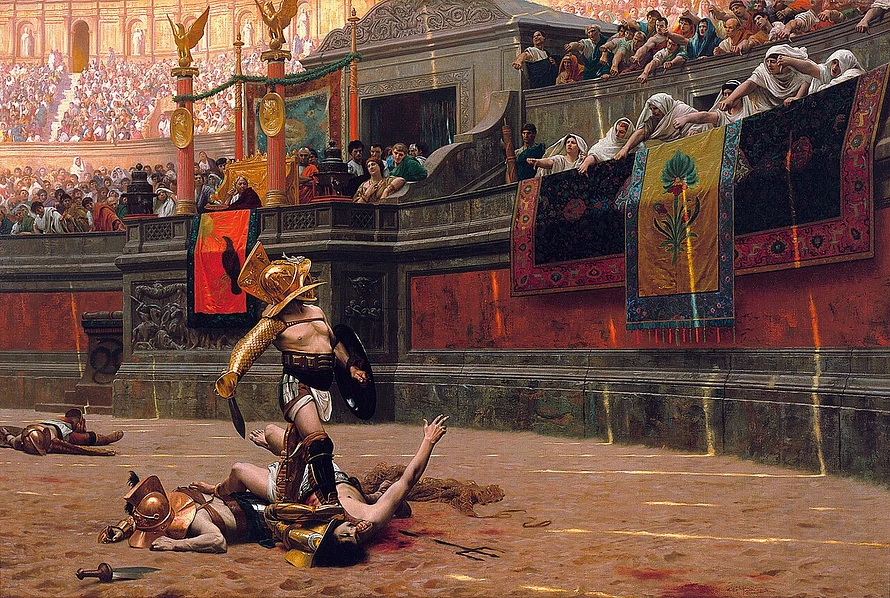The World of Roman Gladiators and the Legacy of Pollice Verso by Jean-Léon Gérôme
Explore the brutal yet fascinating world of Roman gladiators and the impact of Jean-Léon Gérôme’s iconic painting Pollice Verso on popular culture and historical understanding.
Introduction
Few images capture the drama of ancient Rome quite like Jean-Léon Gérôme’s painting Pollice Verso (Latin for “with a turned thumb”). This 19th-century masterpiece ignited modern fascination with Roman gladiators—those fierce combatants of the Colosseum who fought for glory, survival, and the crowd’s approval.
Who Were the Roman Gladiators?
Roman gladiators were trained warriors, often slaves, criminals, or prisoners of war, who entertained massive audiences with violent battles in amphitheaters across the Roman Empire. The most famous venue was the Colosseum in Rome, where up to 50,000 spectators would cheer on fights to the death.
Gladiators came in various classes—murmillo, retiarius, secutor, and thraex, each with distinct armor and combat styles. Far from being mindless brutes, many were skilled athletes with huge fan followings and even merchandising.
Gladiator Games and the Role of the Crowd
The games, known as munera, were deeply tied to Roman politics, religion, and culture. Gladiatorial combat served as both a spectacle and a tool for emperors and elite sponsors to gain popularity. The crowd's reaction often influenced a gladiator’s fate, and this is where the iconic thumb gesture myth comes into play.
Pollice Verso by Jean-Léon Gérôme: Art That Changed Perception
Painted in 1872, Pollice Verso by Jean-Léon Gérôme was a turning point in how the modern world visualizes ancient Rome. The painting depicts a victorious gladiator standing over his defeated opponent, while the crowd, particularly the Vestal Virgins, turns their thumbs down—signifying death.
But here’s the twist: historical evidence on the actual meaning of the “thumbs down” is inconclusive. Some scholars argue that “thumbs up” (pollice verso) may have signaled death, while “thumbs hidden” may have meant mercy.
Still, Gérôme’s painting cemented the idea that a downward thumb meant death—a notion later embraced by Hollywood in films like Gladiator (2000).
The Painting’s Lasting Cultural Influence
Gérôme’s detailed neoclassical style brought ancient Roman scenes to life with vivid realism. Pollice Verso helped shape visual storytelling in movies, video games, and educational materials about the Roman Empire.
Its influence also extends to how we imagine honor, violence, and spectacle in Roman society, often blurring the lines between historical fact and artistic interpretation.
Conclusion
Roman gladiators remain a symbol of bravery, brutality, and the complexity of ancient society. Jean-Léon Gérôme’s Pollice Verso played a pivotal role in defining this imagery for the modern world. While the painting may not be historically perfect, its impact on art, culture, and historical imagination is undeniable.
Whether you’re a history enthusiast, art lover, or curious about ancient traditions, exploring the world of gladiators through the lens of Pollice Verso offers a captivating glimpse into the past.
